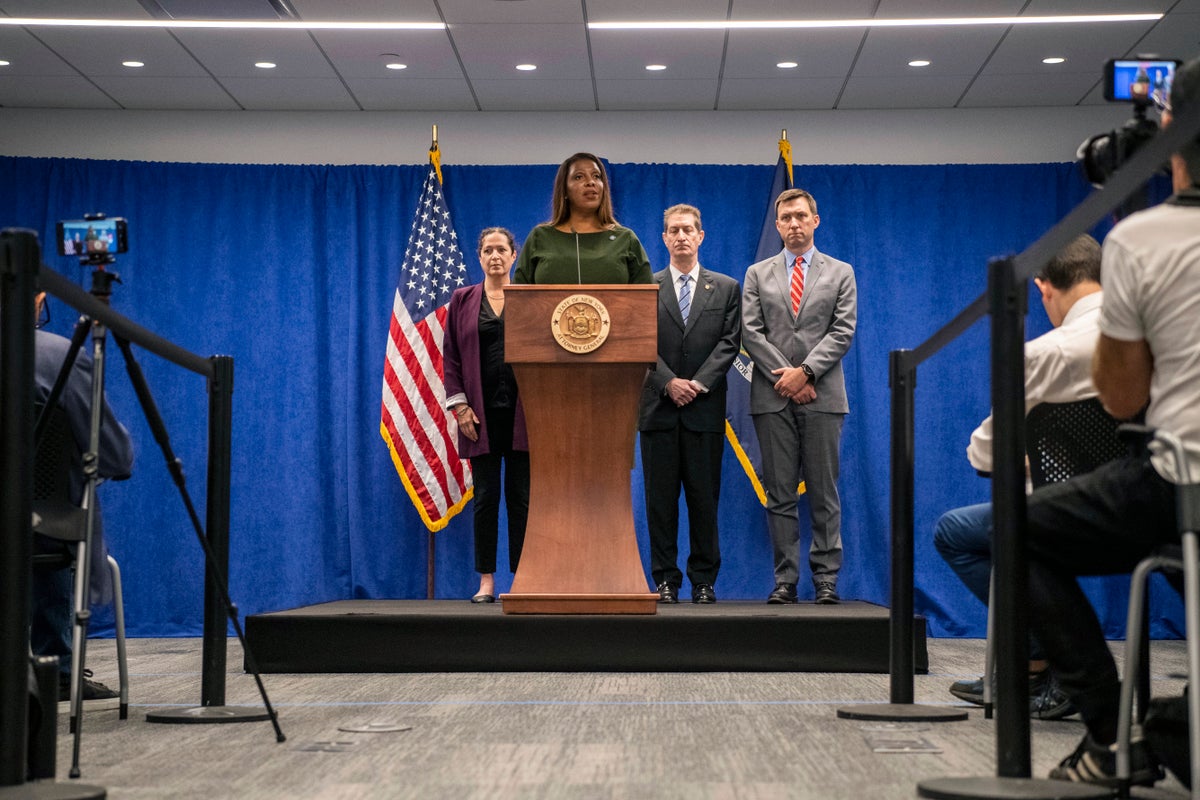
Former President Donald Trump's latest legal woes focus on allegations that he and his company chronically exaggerated the value of things he owned in order to obtain loans, lower his taxes or get deals done.
New York Attorney General Leticia James asserted in a lawsuit filed Wednesday that Trump's company used deceptive schemes to overstate the value of 23 properties and other assets, including his penthouse on Manhattan’s Fifth Avenue and his posh Mar-a-Lago resort in Florida.
Trump's legal team has said that he didn't defraud anyone. Estimating real estate values is a subjective art, they say, and the former president had no intent to trick anyone into getting things he didn't deserve.
Here’s a look at some of the ways Trump is accused in the lawsuit of lying about his net worth:
TRUMP TOWER, NEW YORK:
Trump's advertised his luxurious triplex home in Trump Tower home as being an enormous 30000 square feet (2,787 square meters), when it was actually just a third of that size, according to the attorney general's office. Based partly on that misrepresentation, the organization said in a financial statement in 2015 that the apartment was worth $327 million. “That price was absurd,” the attorney general's office said, noting that Trump's valuation was more than three times the price of the most expensive apartment ever sold in New York City.
MAR-A-LAGO, FLORIDA:
The Trump Organization valued the Mar-a-Lago resort in Florida, now the former president’s main residence, as high as $739 million. The attorney general's office says its real worth was only a tenth of that amount. The company based its valuation on the premise that the waterfront Palm Beach property could be developed as residential homes, when in fact its permissible use was restricted to that of a social club. As such, the revenues from the resort only amounted to $25 million annually, which the attorney general said would have made the property worth about $75 million.
TRUMP PARK AVE., NEW YORK:
In its financial statements, the Trump Organization estimated that its condominium tower on Manhattan's ritzy Park Avenue was worth as much as $350 million, according to the lawsuit. Yet those estimates differed substantially from the internal valuations used by the company for business planning. Part of the higher figures in the financial statements was due to the company ignoring the fact about a dozen apartments in the skyscraper were rent-stabilized, meaning they were unlikely to bring in luxury prices. A bank-ordered appraisal in 2010 valued the units at $750,000. But company statements over the next two years stated the market value for those units at $50 million.
40 WALL ST., NEW YORK:
In an another extreme example, James said the Trump Organization inflated the value of a Wall Street property that had initially been appraised at $220 million in 2012 but in statements, the company said the property was valued at some $530 million — attributing that amount to the same appraisal company that had valued it at a lower amount. Three years later, the Trump Organization obtained a new loan based roughly on higher value. The company then stated the property's valuation was $735 million.
JUPITER GOLF CLUB, FLORIDA:
The New York attorney general accused the Trump Organization of continuing a pattern of deception when it represented the value of a golf course in Jupiter, Florida, at $62 million — just a year after Donald Trump bought it for $5 million. “Virtually all of the value attributed to Jupiter was fraudulently overstated due to several deceptive methods and assumptions,” the attorney general's office said in a statement.
ABERDEEN GOLF COURSE, SCOTLAND:
The Trump Organization built fewer than 1,500 cottages and apartments at a golf course development in Aberdeen, Scotland, even though 2,500 such units were assumed. The company stated the value as $327 million, with $267 million of that valuation based on the build-out of 2,500 housing rentals, the attorney general's office said.







